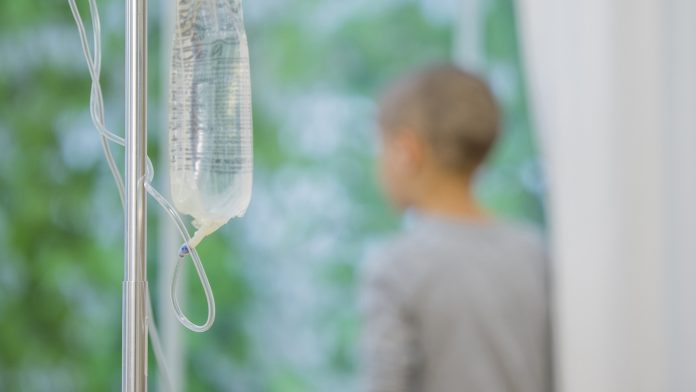
In a world first, a patient with relapsed T cell leukaemia has received base-edited CAR T cell therapy at Great Ormond Street Hospital.
In 2021, 13-year-old Alyssa from Leicester was diagnosed with acute T Cell lymphoblastic leukaemia (T-ALL). Alyssa received a range of conventional blood cancer therapies, including chemotherapy and a bone marrow transplant. However, her condition relapsed, and no further treatment options were available.
This new therapy comes as a result of a ‘bench-to-bedside’ collaboration between University College London (UCL) and Great Ormond Street Hospital.
New base-editing technology enabled experimental treatment
Alyssa was admitted to the Bone Marrow Transplant (BMT) Unit at Great Ormond Street, where she became the first patient to be enrolled in the TvT clinical trial in May 2022. She received ‘universal’ CAR T-cells that had been pre-manufactured from a healthy volunteer donor.
New base-editing technology was used to alter the cells; this was designed by researchers from UCL. The study was led by Professor Waseem Qasim, who is also an Honorary Consultant at Great Ormond Street.
Alyssa was fitted with a Chimeric Antigen Receptor (CAR), which enables antigens to hunt down and eliminate cancerous T-cells without attacking each other.
After just 28 days, Alyssa went into remission and was able to receive a second bone marrow transplant which restored her immune system. Without CAR T cell treatment Alyssa’s only option would have been palliative care.
The researchers recently presented their data at the American Society of Haematology annual meeting in New Orleans, USA.
To create these CAR T cells, healthy donor T-cells, taken from the Anthony Nolan registry, were engineered at the Great Ormond Street Hospital clean room facility with four separate changes. These changes were:
- Removing existing receptors so that T-cells from a donor can be banked and used without matching – making them ‘universal’.
- Removing a ‘flag’ called CD7 that identifies them as T-cells (CD7 T-cell marker). Without this step T-cells programmed to kill T-cells would simply end up destroying the product through ‘friendly-fire’
- Removing a second ‘flag’ called CD52. This makes the edited cells invisible to some of the strong drugs given to the patient during the treatment process.
- Adding a Chimeric Antigen Receptor (CAR) which recognises the CD7 T-cell receptor on leukemic T-cells. The cells become armed against CD7 and recognise and fight T-cell leukaemia.
These edits were achieved through ‘base editing’, which involves chemically converting single nucleotide bases that carry instructions for specific proteins. For example, changing specific nucleotide bases in the gene for CD7 from cytosine to thymine can create a ‘stop codon’. This prevents the cell machinery from reading the full instructions and the production of CD7 is terminated.
CAR T cell therapy is more precise than existing treatments
The result is an edited CAR T-cell that can be administered to patients, rapidly finding, and destroying T-cells in the body, including leukemic T-cells. The patient can then restore their depleted immune system through a bone marrow transplant.
Previous treatments for Leukaemia have relied on TALENS or CRISPR/, a technique that delivers changes to genes through cuts made by molecular ‘scissors. CAR T cell therapy acts without breaking DNA, allowing for more edits, with fewer risks of unwanted effects on chromosomes.
“We designed and developed the treatment from lab to clinic and are now trialling it on children from across the UK – in a unique bench-to-bedside approach. Alyssa’s story is a great demonstration of how, with expert teams and infrastructure, we can link cutting-edge technologies in the lab with real results in the hospital for patients. It’s our most sophisticated cell engineering so far and paves the way for other new treatments and ultimately better futures for sick children,” said Professor Qasim.
“We have a unique and special environment here at GOSH and UCL that allows us to rapidly scale up new technologies and we’re looking forward to continuing our research and bringing it to the patients who need it most,” he concluded.
























